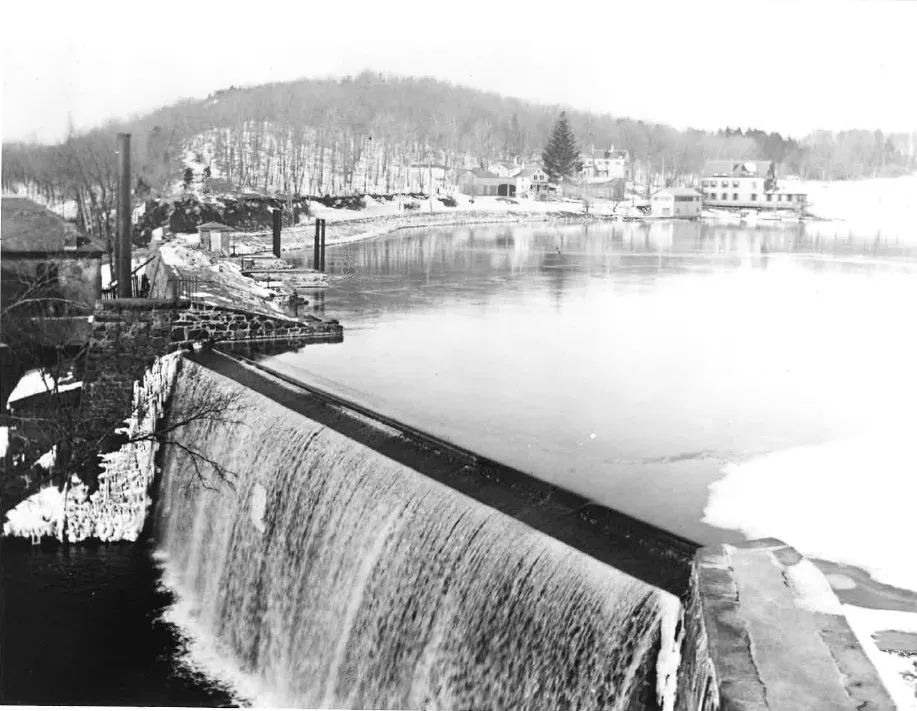
There is a dam that’s been holding back water in Connecticut for more than 150 years and it needs some work for a number of reasons, according to the state and the agency that oversees the structure.
“The Whitney Dam was completed in 1861 and has been in service since the Civil War. It must be upgraded and fortified to withstand future extreme weather events, to meet modern engineering standards,” a spokesperson for the South Central Connecticut Regional Water Authority said.
This is “to comply with evolving regulations, and to ensure that it can continue to serve the region’s drinking water supply long into the future,” the spokesperson said.
The South Central Connecticut Regional Water Authority serves 17 South Central Connecticut towns. The dam is in Hamden.
According to the state Department of Energy and Environmental Protection, the Lake Whitney Dam and Lake Whitney are “critical water supply infrastructure necessary for the South Central Connecticut Regional Water Authority to provide clean and abundant drinking water.”
The dam has been “improved over the years to impound the lake to serve as a reservoir feeding the Lake Whitney Water Treatment Plant to supply at an average rate of 4 million gallons per day,” according to DEEP. Further, the dam is part of the original Eli Whitney Gun Factory Site and is listed on the National Register of Historic Places, according to DEEP.
The water authority has done “inspections and analyses that have identified items related to the durability of the dam,” but while “minor dam stability improvements have been included in previous dam expansion projects, there have been no projects completed since the dam’s original construction that have been solely performed to significantly improve the dam’s stability,” DEEP reports.
Tract of land near CT reservoir that provides drinking water is bought. Here’s why and what it cost.
The proposed project will improve stability (to prevent sliding or overturning of the dam), reduce seepage (leakage of water through the dam) and increase spillway capacity (ability to convey normal water flow over the dam).
The dam is a Class C high hazard dam in accordance with state regulations, according to DEEP and under “regulatory definition, failure of a Class C dam would result in ‘probable’ loss of life,’” the agency reports.
“If a failure of the Lake Whitney Dam were to occur and result in an extended loss of supply availability during a historical drought of record, the SCCRWA would be at risk of not having adequate reservoir storage to provide a reliable source of public drinking water supply to the region,” DEEP reports. “This has potentially catastrophic implications for public health and safety, including shortages of water for fire-fighting and critical customers such as hospitals, nursing homes, and other medical facilities…(and) a dam failure or loss of the reservoir would also have dire economic consequences, including impacts to manufacturing, food services, recreation activities, and the agricultural industry.”
The water authority spokesperson said the agency has “completed the design phase of the upcoming project, selecting a rehabilitation approach that maintains the Whitney Dam’s historic stone façade, and which is mindful of community and environmental impacts.”
The authority also has been in discussion about the project with the State Historic Preservation Office and other stakeholder groups, according to DEEP.
“We are currently working with early-stage contractors, who are likely to perform the dam rehabilitation work, while pursuing the required permitting. The final project cost will depend on the outcome of these efforts and other factors,” the water authority spokesperson said in an email.
However, the spokesperson said. executing agreements and proceeding with the construction phase “will first require a public hearing and approval by the RWA’s Representative Policy Board, which is 21-member board “comprised of members from of each RWA community, plus a member appointed by the governor, which, among other things, must vote on all capital projects in excess of $3.5 million”
According to the water authority, the dam project goals are
To enhance the dam’s stability;
To Increase the spillway capacity;
To control water seepage, (common with all dams, as the stored water seeks paths of least resistance through their foundations);
To upgrade the rainfall capacity of the dam to safely handle 34 inches of rain over three days due to climate change and more intense storms.
The water authority provided an example for comparison, noting “the largest rainfall event recorded in Hamden was in June of 1982, when nearly 12 inches of rain fell over a three-day period.”
The authority anticipates construction to begin during the second half of 2026.
DEEP also noted that the water authority considered “many alternative design approaches to seek solutions to a variety of issues, including cost savings and minimizing impacts to the environment. The selected alternative is to repair the dam on the upstream side, thus preserving the historic façade of the dam.”



